Maintaining a shared driveway can sometimes feel like walking a fine line between neighborly cooperation and miscommunication. It's essential to establish clear guidelines that cater to everyone's needs, ensuring a smooth and hassle-free experience for all parties involved. By openly discussing maintenance responsibilities, cost-sharing, and scheduling, we can cultivate a positive atmosphere and prevent potential conflicts. Curious about how to draft the perfect letter for your shared driveway agreement? Let's dive in!
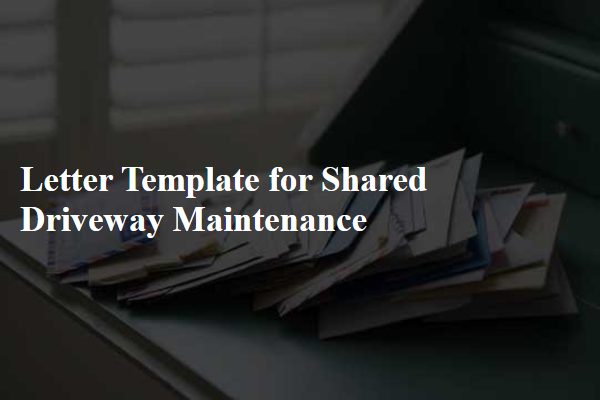
Clear Identification of Properties and Owners
Clear identification of properties and owners is essential for maintaining shared driveways effectively. Each property (identified by specific addresses such as 123 Maple Street and 124 Maple Street) should be marked clearly, ensuring all parties understand ownership. Property owners (including John Smith for 123 Maple Street and Jane Doe for 124 Maple Street) must agree on maintenance responsibilities, including regular cleaning schedules and shared costs for repairs. Accurate documentation, such as property deeds or homeowner association agreements, can further clarify ownership stakes and responsibilities. Communication between owners can facilitate a cooperative relationship, ensuring the driveway remains in optimal condition for both properties.
Detailed Description of Maintenance Tasks
Shared driveways require consistent maintenance to ensure safety and accessibility for all users. Regular tasks include filling potholes that may develop due to rain and vehicle wear, typically using cold patch asphalt (an easy-to-apply material ideal for quick repairs). Additionally, periodic resurfacing every few years can prevent deterioration by applying a layer of sealcoat (which protects asphalt from UV damage and water penetration). Cleaning debris like leaves and dirt through power washing improves aesthetics and prevents slippery surfaces. Furthermore, addressing drainage issues by installing proper channels or drains will prevent water pooling and subsequent erosion. Clearing snow during winter months will avoid hazards and ensure accessibility, particularly on residential streets with significant traffic.
Proposed Schedule and Frequency of Maintenance
Shared driveways require regular maintenance to ensure optimal functionality and aesthetics. A proposed schedule includes quarterly inspections in January, April, July, and October. During these inspections, essential tasks like pothole repairs, seal coating application, and thorough cleaning should be conducted. Weekly sweeping is essential to remove debris and leaves, particularly in fall months when leaves contribute to clogging drains. Moreover, two major maintenance events, such as resurfacing every five years, should be anticipated to prolong the driveway's lifespan. Engaging a local contractor with a proven track record in driveway maintenance ensures adherence to these timelines and quality standards, ensuring a well-maintained access point for all residents.
Cost-Sharing Agreement and Payment Terms
A shared driveway maintenance agreement, often necessitated by cooperative arrangements between neighbors, outlines responsibilities for upkeep and cost-sharing across property boundaries. Essential considerations include the total annual maintenance expenses, often averaging between $500 to $1,500 depending on geographical location and material types used for resurfacing. Specific payment terms, such as due dates (e.g., within 30 days of invoicing), ensure timely contributions from each party. Clear delineations on the frequency of maintenance, including repairs, sealing, or snow removal, guide expectations. Furthermore, agreed-upon dispute resolution methods, potentially involving local mediators, should be incorporated to resolve any disagreements amicably. Establishing a structured agreement fosters collaboration and maintains the integrity of the shared space for both property owners involved.
Contact Information for Queries and Communication
Shared driveways, often found in residential complexes or neighborhoods, require ongoing maintenance to ensure smooth accessibility for all residents. Issues such as potholes, cracks, or uneven surfaces may arise, impacting usability, particularly for larger vehicles like SUVs or delivery trucks. A scheduled maintenance plan can address these concerns, typically organized quarterly, discussing costs and repairs during community meetings. Residents should provide their contact information, including phone numbers and emails, to facilitate communication. Prompt reporting of issues, such as drainage problems or surface wear, enhances the safety and functionality of the shared space, ensuring a collaborative approach towards upkeep.

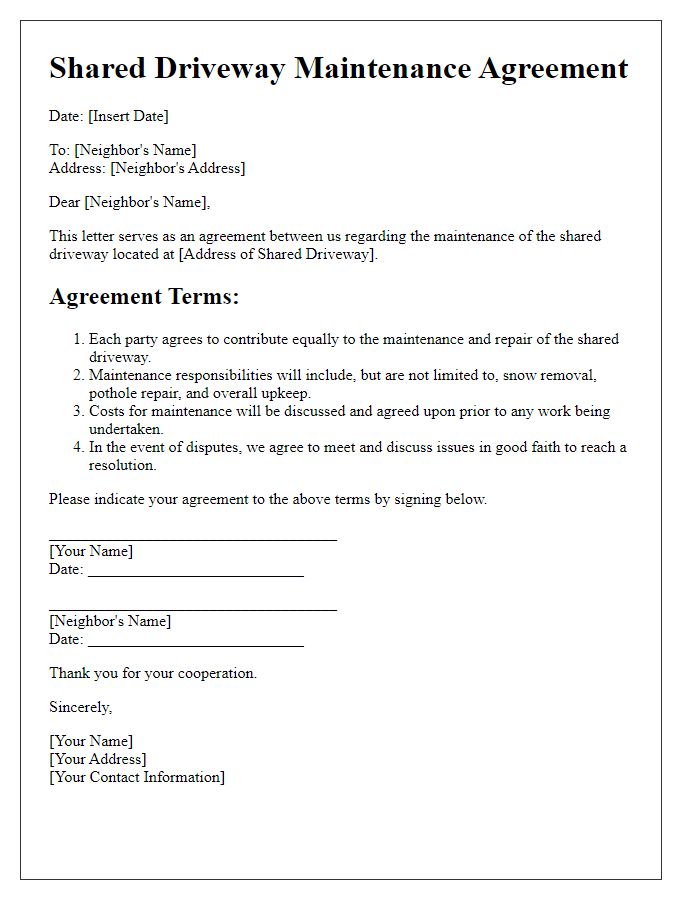
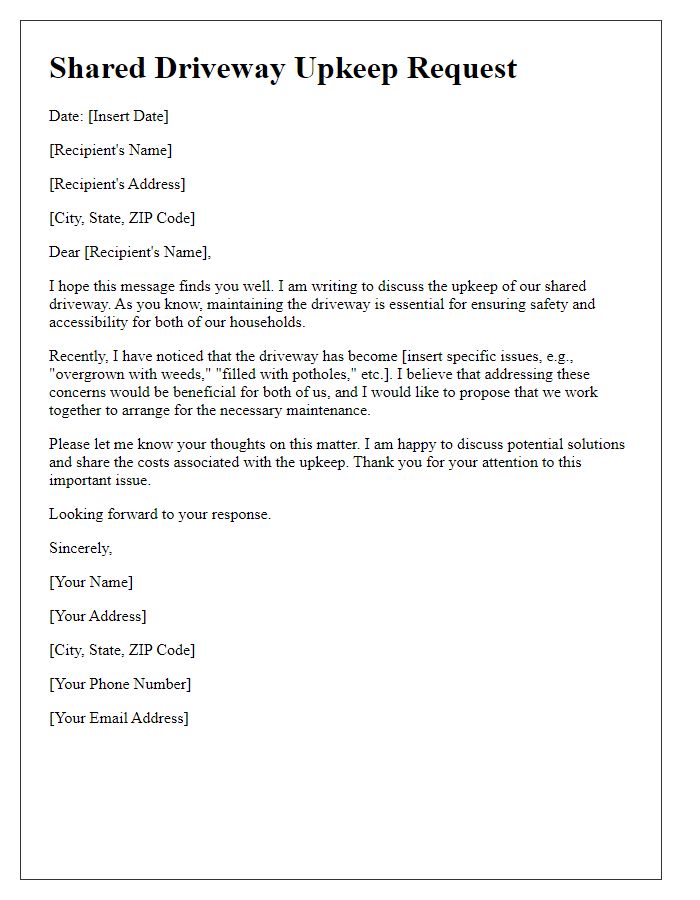
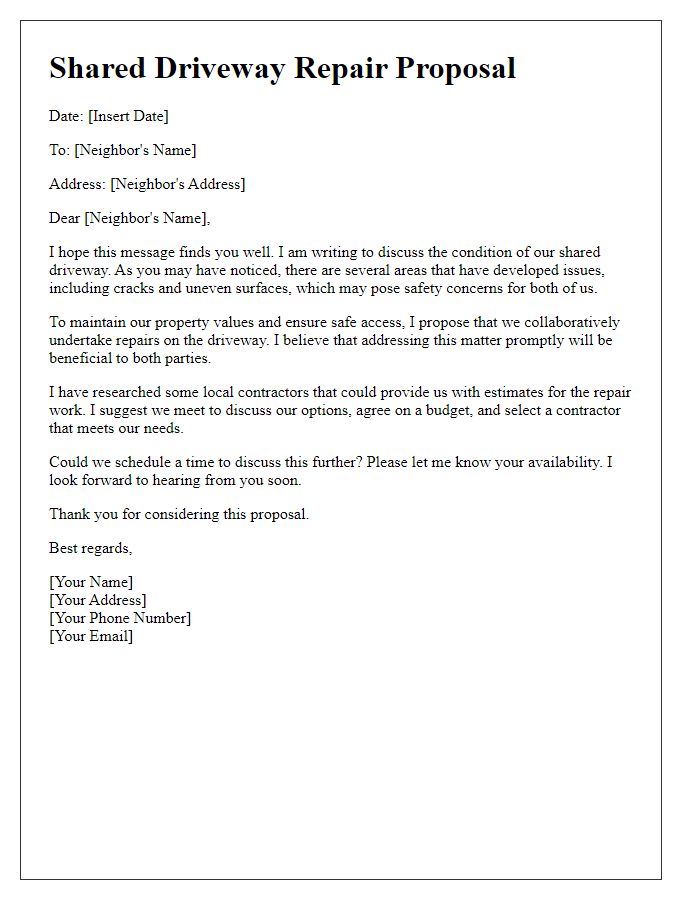
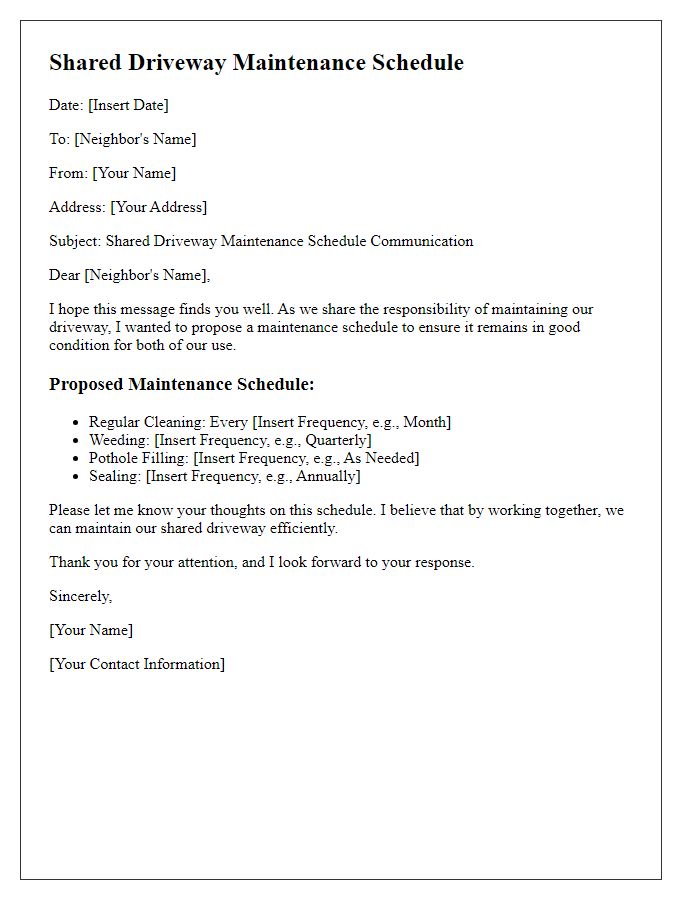
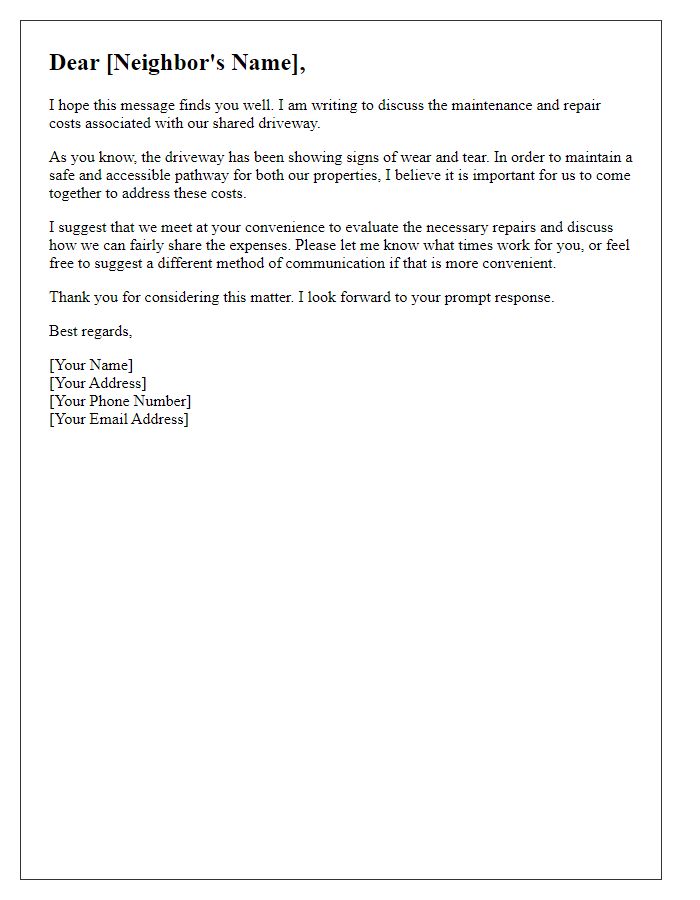
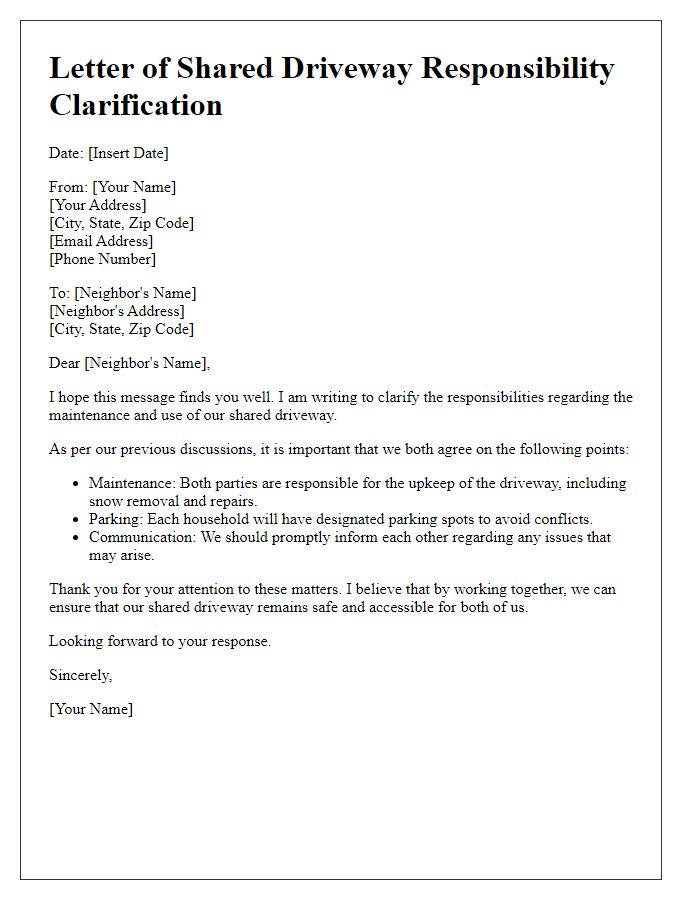
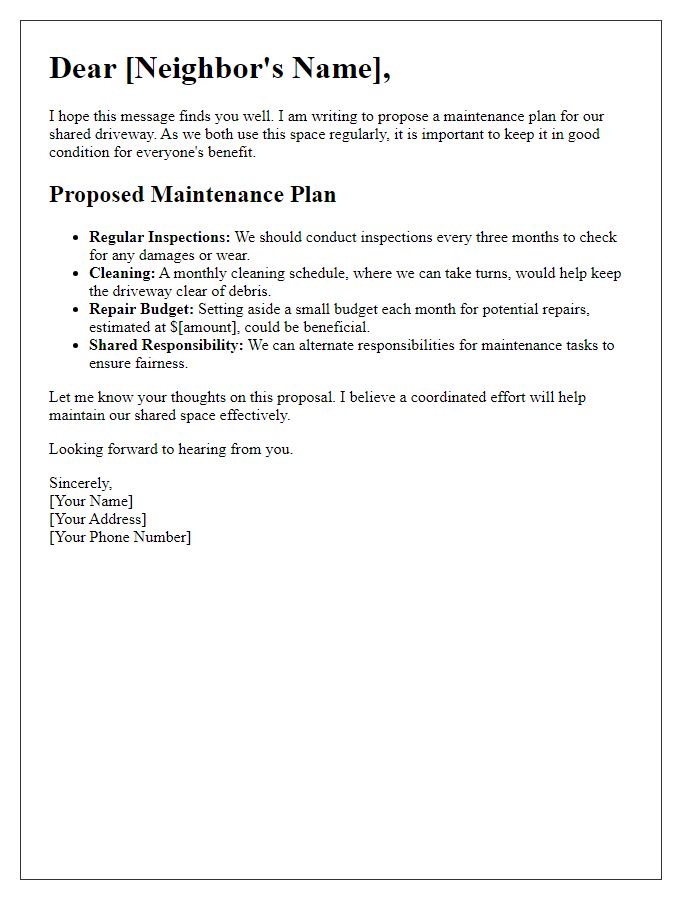
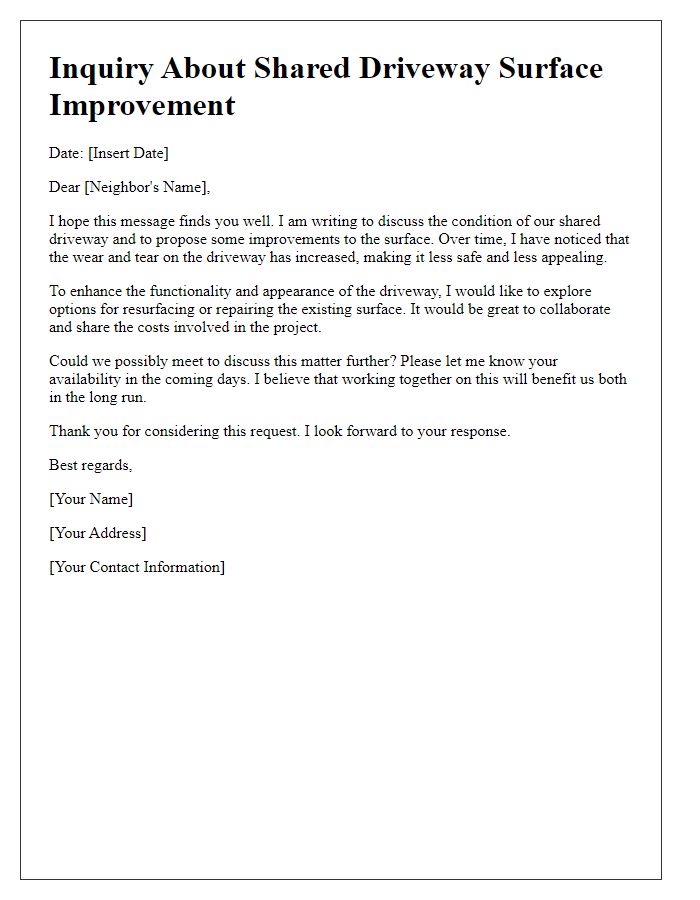
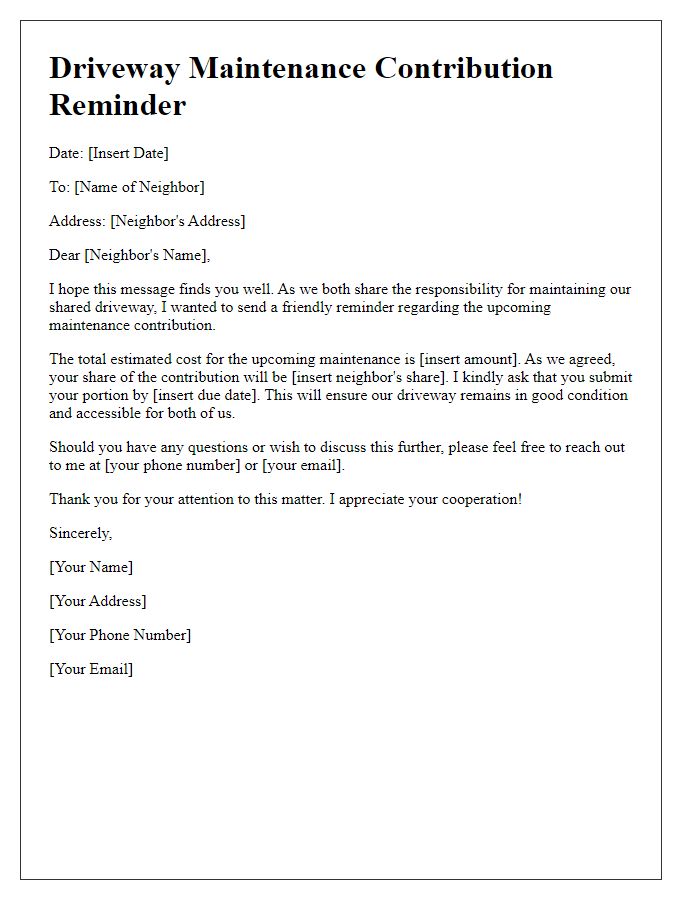



Comments